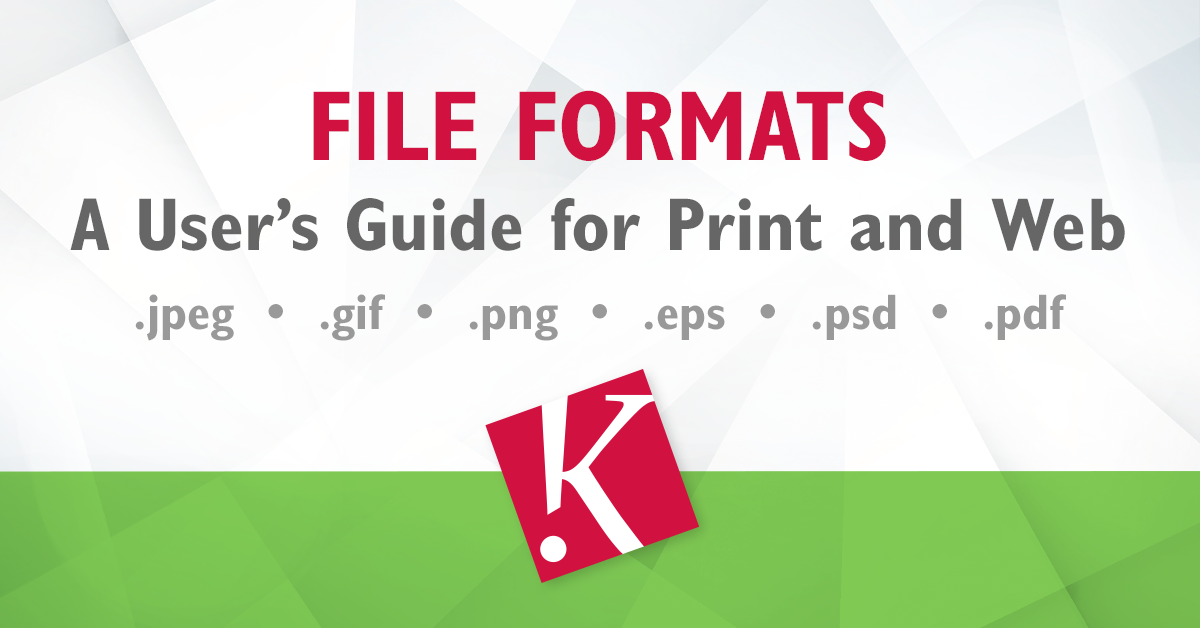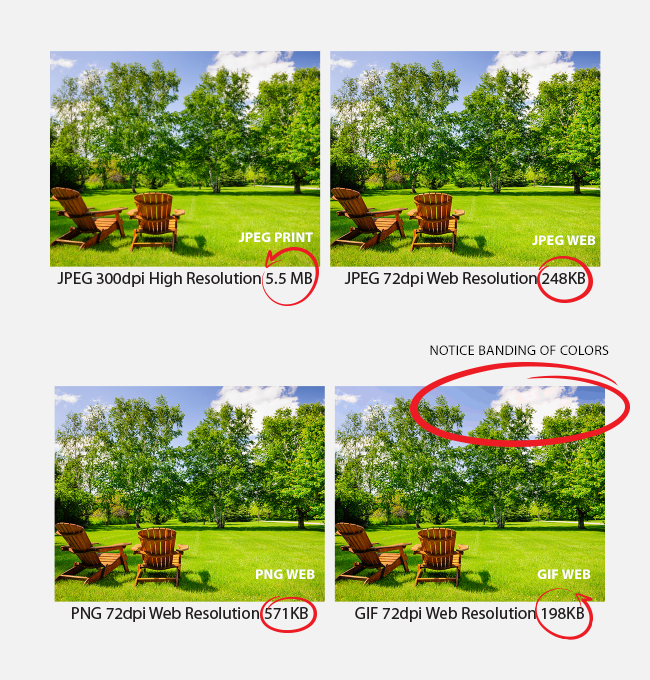FILE FORMATS – A USER’S GUIDE FOR PRINT AND WEB
/GIF, EPS, PDF. WTF?
WEB FILE FORMATS
JPEG or JPG (Joint Photographic Experts Group)
What it is: JPEG is the most common image format for web and print. A high-resolution photo can be compressed and saved as an optimized .JPEG file for use on the web. Although most JPEG images look fine to the naked eye, there is a noticeable loss of quality when you zoom in.
When to use it: On the web, JPEGs are best when a small file size is more important than image quality. This file format works for still images or photos with complex graphics. Text, simple shapes or large color blocks may become pixelated.
GIF (Graphic Interchange Format)
What it is: Unlike JPEGs, GIFs are a lossless file format that does not degrade the quality of the image. However, while JPEGs support 16 million colors, GIFS compress image data using only 256 indexed colors.
When to use it: GIFs are best for images that contain large areas of uniform color. They work well for simple animations, icons and graphics with flat colors (no gradients).
PNG (Portable Network Graphics)
What it is: A newer file format than JPEG and GIF, PNGs are a lossless format that doesn’t compromise image quality as it compresses file size. Unlike JPEGs, which may blur images, PNG files retain all their data when compressed.
When to use it: PNG’s are best when image quality is more important than file size. Because PNG’s also support transparency, you can replace their background color with your website’s background color. They work well for logos, icons and illustrations that require transparency.
PRINT FILE FORMATS
Example of a vector .eps logo. The blue points illustrate the vector paths that make up the logo.
EPS (Encapsulated PostScript) and AI (Adobe Illustrator Artwork)
What they are: EPS and AI files are file formats that include high-resolution vector artwork for use at different scales. They are created using Adobe Illustrator or Corel Draw software. These programs use points, lines, and shapes to create artwork that can be scaled infinitely, without any loss of quality.
When to use them: EPS and AI files are mainly used for logo files, icons, and illustrations. EPS and AI files work well for graphics that require large-scale printing, such as large signs and banners.
PSD (Photoshop Data)
What it is: PSD files are created and saved in Adobe Photoshop, an imaging and photo editing software. This file type contains “layers” that allow you to edit one area or layer independently without affecting any other layer. You can flatten layers on the completed image and convert it to a JPEG, GIF or other non-proprietary file format so it can be shared.
When to use it: Because they allow you to edit individual layers even after the file has been saved, PSDs are a favorite working format for photographers and designers.
PDF (Portable Document Format)
What it is: PDFs are an optimal format for presenting and sharing files. You can view a PDF without any design editing software as long as you have the free program Adobe Reader, used specifically for opening PDF files.
When to use it: PDFs capture formatting information from a wide range of applications, allowing you to “package” your file into a universally readable format. PDFs are also an option for creating and filling out interactive forms but are generally not a good format for files that need to be edited.
Kelley & Associates has an experienced team of designers and developers that can evaluate your use of images across platforms. To learn more, Contact us today.






